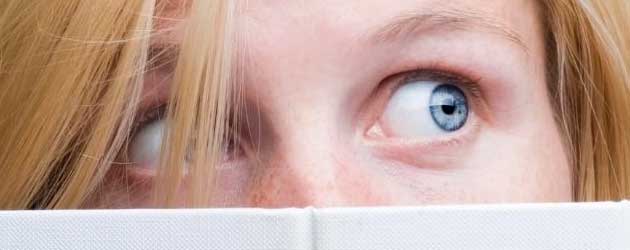Scopophobia Unmasked: A Comprehensive Guide to Conquering the Fear of Being Seen. Overcoming: Practical Strategies and Expert Advice for Dealing with the Fear of Being Stared At. From Fear to Freedom: Understanding and Treating
Scopophobia, a lesser-known yet debilitating condition, can significantly impact an individual’s daily life. As a result, it is vital to understand the nature of this phobia and explore various approaches to overcome it.
By recognizing the signs and symptoms, seeking professional help, and employing appropriate coping strategies, those affected by scopophobia can regain their confidence and improve their overall well-being. In this article, we will delve into the definition and meaning of scopophobia, discuss methods to identify its presence and examine the available treatments to overcome this challenging condition.
Contents
What is Scopophobia
Definition and Meaning
Scopophobia, also referred to as „scoptophobia“ or „ophthalmophobia,“ is the irrational and persistent fear of being seen or stared at by others. This phobia stems from a heightened sense of self-consciousness, leading to overwhelming anxiety when one believes they are the focus of attention. People with scopophobia often feel uneasy in social situations, fearing judgment or scrutiny from those around them.
How it Affects People’s Lives
Scopophobia can significantly impact an individual’s personal, professional, and social life. Those with scopophobia may limit their interactions with others and avoid public places to avoid situations that trigger their anxiety. They might experience difficulty forming relationships, pursuing career opportunities, or participating in social events. The constant state of anxiety and stress can also lead to physical symptoms, such as headaches, digestive issues, and sleep disturbances.
Classification of Scopophobia (Type of Fear)
Scopophobia is classified as a specific phobia that falls under the broader category of anxiety disorders. Excessive, irrational fear of a particular object or situation characterizes specific phobias. In the case of scopophobia, trepidation revolves around the perception of being watched or stared at by others.
Pronunciation of Scopophobia
The term „scopophobia“ is pronounced as „skoh-puh-FOH-bee-uh.“ The word originates from the Greek roots „skopein,“ (σκοπέω, skopeō) meaning „to look or examine,“ and „φόβος phobos,“ meaning „fear.“
Test: Do I Have Scopophobia?
Brief Explanation of the Quiz
The following quiz will help you assess whether you may be experiencing scopophobia. Remember that this quiz is not a diagnostic tool and should not be used as a substitute for a professional evaluation. If you suspect that you have scopophobia or any other anxiety disorder, it is crucial to consult a mental health professional for proper assessment and guidance.
Quiz: Do I Have Scopophobia?(non-interactive)
Answer „Yes“ or „No“ to the following questions:
- Do you feel anxious or panicked when you think someone is staring at you?
- Do you avoid eye contact in social situations?
- Are you overly concerned with your appearance, fearing judgment from others?
- Do you find engaging in group discussions or activities challenging because you worry about being the center of attention?
- Have you ever left a public place due to feeling overwhelmed by the possibility of being watched?
- Do you experience physical symptoms (e.g., sweating, rapid heartbeat, difficulty breathing) when you believe you are being observed?
- Do you go out of your way to avoid situations where you might be seen or stared at by others, such as attending social events or speaking in public?
- Have your concerns about being watched negatively impacted your personal, professional, or social life?
If you answered „Yes“ to four or more of these questions, you might be experiencing symptoms consistent with scopophobia. However, remember that this quiz is not definitive and should not be used to self-diagnose. If you are concerned about your mental health, consult a mental health professional for proper evaluation and guidance.
Symptoms: How to Know if You Have Scopophobia
Physical Symptoms
Scopophobia can manifest in various physical symptoms when an individual feels they are being watched or scrutinized. These symptoms may include:
- Rapid heartbeat
- Shortness of breath
- Sweating or clammy hands
- Trembling or shaking
- Dizziness or lightheadedness
- Nausea or stomach discomfort
- Tense muscles or muscle aches
Psychological Symptoms
In addition to physical symptoms, scopophobia can also lead to several psychological symptoms, such as:
- Intense feelings of anxiety or panic
- Excessive self-consciousness
- Fear of embarrassment or humiliation
- Persistent worry about being watched or judged
- Intrusive thoughts about being observed
- Difficulty concentrating or focusing
Behavioral Symptoms
Scopophobia can also affect an individual’s behavior, leading to the following symptoms:
- Avoiding eye contact
- Escaping or avoiding situations where they feel observed
- Limiting social interactions or isolating oneself
- Seeking reassurance from others about their appearance or behavior
- Engaging in repetitive, time-consuming behaviors to minimize the chances of being noticed (e.g., grooming rituals, choosing clothing that blends in)
Examples of Scopophobia
Scopophobia can manifest in various situations, depending on the severity of the condition and the individual’s unique experiences. Some examples of scopophobia in action may include:
- Avoiding public speaking events, presentations, or performances due to the fear of being watched.
- Feeling extremely anxious and self-conscious when eating in public or in front of others.
- Experiencing panic attacks in crowded places, such as shopping malls or public transportation, due to the perception of being observed.
- Constantly checking mirrors or other reflective surfaces to ensure that no one is watching.
- Withdrawing from social events or gatherings, even when it leads to missed opportunities or strained relationships.
Diagnosis of Scopophobia
Criteria for diagnosis according to the DSM-V
The Diagnostic and Statistical Manual of Mental Disorders, Fifth Edition (DSM-V), is a vital resource for mental health professionals in diagnosing various psychological conditions. While scopophobia is not explicitly listed as a separate diagnosis, it falls under the umbrella of Specific Phobias. To receive a diagnosis, an individual must meet the following criteria:
- Marked fear or anxiety about a specific object or situation (in this case, being observed or scrutinized by others).
- The phobic situation almost always provokes immediate fear or anxiety.
- The fear or anxiety is out of proportion to the actual danger posed by the specific object or situation and to the sociocultural context.
- The fear, anxiety, or avoidance is persistent, typically lasting for six months or more.
- The fear, anxiety, or avoidance causes clinically significant distress or impairment in social, occupational, or other important areas of functioning.
- Other mental disorders, such as Obsessive-Compulsive Disorder, Posttraumatic Stress Disorder, or Social Anxiety Disorder, do not better explain the disturbance.
Importance of seeking professional help
Suppose you suspect that you or someone you know may have scopophobia. In that case, it’s crucial to seek professional help from a qualified mental health professional, such as a psychologist, psychiatrist, or counselor. Early diagnosis and intervention can significantly improve treatment outcomes and help individuals learn how to manage their symptoms more effectively.
Self-diagnosing or attempting to treat scopophobia without professional guidance may not yield the desired results and could worsen the condition. Mental health professionals can provide a thorough assessment, create a tailored treatment plan, and offer the necessary support throughout the recovery process.
By seeking professional help, individuals with scopophobia can access evidence-based treatments, such as cognitive-behavioral therapy, exposure therapy, or medication if deemed appropriate, to help reduce their fear and anxiety related to being observed or scrutinized by others.
What is Scopophobia Caused By?
Genetics and family history
One of the potential causes of scopophobia is genetics and family history. Research has shown that specific phobias, such as scopophobia, may have a genetic component, making individuals more susceptible to developing this fear if they have family members who also experience it. Though the specific genetic factors are not yet fully understood, it is evident that having a close relative with a particular phobia can increase the likelihood of developing scopophobia.
Traumatic experiences or negative social interactions
Another significant factor in the development of scopophobia is traumatic experiences or negative social interactions. A person may become fearful of being watched or scrutinized if they have experienced an emotionally distressing event that involved feeling observed, judged, or humiliated. For example, a child constantly criticized or ridiculed by their peers or family members may develop scopophobia as a coping mechanism to avoid similar situations in the future.
Negative social interactions, such as being bullied or feeling rejected, can also contribute to the development of scopophobia. These experiences can lead to a heightened sense of self-consciousness and a fear of being judged or negatively evaluated by others, ultimately resulting in scopophobia.
Underlying mental health conditions such as social anxiety disorder
Scopophobia can also be linked to underlying mental health conditions, such as social anxiety disorder. Social anxiety disorder is characterized by a persistent fear of social situations and an intense fear of being judged, embarrassed, or humiliated in front of others. In some cases, this fear may become more specific, focusing primarily on the fear of being watched or scrutinized by others, leading to scopophobia.
Individuals with a social anxiety disorder may exhibit symptoms of scopophobia as part of their broader anxiety issues. Addressing the underlying social anxiety disorder through therapy, medication, or other interventions can help alleviate scopophobia symptoms and improve overall mental health.
How to Get Rid of Scopophobia
Herbs and Supplements with recipes
While professional help, therapy, and medication are often the most effective ways to treat scopophobia, some individuals may find relief through herbs and supplements. Two popular herbal remedies that have been found to help alleviate anxiety symptoms are valerian root and passionflower. Here, we discuss these herbs and provide recipes for incorporating them into your daily routine.
Valerian root
Valerian root is a popular herbal remedy known for its calming effects on the nervous system. It has been used for centuries to help treat anxiety, stress, and insomnia. Some studies have shown that valerian root may help reduce anxiety symptoms, making it a potential option for those looking to manage their scopophobia naturally.
Valerian Root Tea Recipe
Ingredients:
- One teaspoon of dried valerian root
- 8 ounces boiling water
- Honey or lemon (optional)
Instructions:
- Place the dried valerian root in a tea infuser or tea ball.
- Pour boiling water over the valerian root and let it steep for 5-10 minutes.
- Remove the infuser or tea ball and discard the valerian root.
- Add honey or lemon to taste, if desired.
- Enjoy the tea 30 minutes before bedtime or during times of high anxiety.
Passionflower
Passionflower is another herbal remedy used for centuries to help reduce anxiety and promote relaxation. It is believed to work by increasing the levels of gamma-aminobutyric acid (GABA) in the brain, which helps to calm the nervous system. Some studies have shown that passionflower may effectively reduce anxiety symptoms, making it another potential option for those seeking to manage their scopophobia naturally.
Passionflower Tincture Recipe
Ingredients:
- 1 cup dried passionflower
- 2 cups vodka or another high-proof alcohol
- A clean glass jar with a tight-fitting lid
Instructions:
- Place the dried passionflower in the glass jar.
- Pour the vodka over the passionflower, making sure it is completely submerged.
- Seal the jar tightly and store it in a cool, dark place for 4-6 weeks, shaking it every few days to mix the contents.
- After 4-6 weeks, strain the mixture through a cheesecloth or fine mesh strainer to remove the passionflower. Discard the solids and transfer the liquid tincture to a clean glass bottle with a dropper.
- To use the tincture, take 10-30 drops under the tongue or in a glass of water up to 3 times a day during periods of anxiety.
It is essential to note that while herbs and supplements may relieve scopophobia symptoms, they should not be considered a substitute for professional help. Consult with a healthcare provider before using any herbs or supplements, especially if you are taking medications or have other medical conditions.
Exercises and How to Do Them
In addition to herbal remedies, practicing relaxation techniques can help reduce anxiety associated with scopophobia. Two practical exercises for managing anxiety symptoms are deep breathing exercises and progressive muscle relaxation. Below, we provide step-by-step instructions for each exercise.
Deep Breathing Exercises
Deep breathing exercises can help calm the nervous system and reduce anxiety by focusing attention on the breath and promoting relaxation. The following practice, known as diaphragmatic or belly breathing, is simple to perform and can be done anywhere.
Diaphragmatic Breathing Exercise
Instructions:
- Find a comfortable and quiet place to sit or lie down.
- Place one hand on your chest and the other on your abdomen.
- Take a slow, deep breath through your nose for a count of four. Focus on expanding your abdomen rather than your chest. You should feel the hand on your belly rise while the hand on your chest remains still.
- Hold your breath for a count of two.
- Slowly exhale through your mouth for a count of six, feeling the hand on your abdomen lower as you release the breath.
- Continue this breathing pattern for several minutes, maintaining a steady rhythm and keeping your chest still while your abdomen rises and falls.
Practice this deep breathing exercise daily or whenever you feel anxious to help manage your scopophobia symptoms.
Progressive Muscle Relaxation
Progressive muscle relaxation (PMR) is a technique that involves tensing and relaxing various muscle groups to promote overall relaxation and reduce anxiety. By focusing on the physical sensations associated with muscle tension and relaxation, individuals with scopophobia can redirect their attention away from their fear and anxiety.
Progressive Muscle Relaxation Exercise
Instructions:
- Find a quiet and comfortable place to sit or lie down.
- Close your eyes and take a few deep breaths, focusing on your breathing.
- Starting with your feet, tense the muscles in your toes and feet for a count of five.
- Slowly release the tension in your toes and feet for a count of ten, noticing the sensation of relaxation.
- Move to your lower legs, tensing the muscles in your calves for a count of five.
- Release the tension in your calves for a count of ten, again focusing on the sensation of relaxation.
- Continue this pattern of tensing and relaxing muscle groups throughout your body, working your way up to your thighs, buttocks, abdomen, chest, arms, hands, neck, and face.
- Once you have completed the entire sequence, take a few moments to enjoy relaxation throughout your body.
Incorporate progressive muscle relaxation into your daily routine or use it during heightened anxiety to help manage your scopophobia symptoms. Remember to consult a healthcare professional for guidance on the best approaches to address your needs and concerns.
Coping Strategies for Scopophobia
Aside from professional treatment and therapeutic exercises, individuals with scopophobia can also benefit from various coping strategies that promote mental well-being and foster resilience. Some effective coping strategies include practicing mindfulness and relaxation techniques, building self-esteem and confidence, and seeking support from loved ones. Below, we provide a brief overview of each method.
Mindfulness and Relaxation Techniques
Mindfulness is the practice of paying attention to the present moment without judgment, promoting self-awareness and emotional regulation. Incorporating mindfulness and relaxation techniques into daily life can help individuals with scopophobia manage their anxiety and gain control over their thoughts and emotions.
Guided Meditation for Mindfulness
One way to practice mindfulness is through guided meditation. Here’s a simple exercise to help you get started:
- Find a quiet, comfortable place to sit or lie down.
- Close your eyes and take a few deep breaths, focusing on the sensation of the breath entering and leaving your body.
- Begin to notice the sounds, smells, and sensations around you without judgment or analysis.
- If your mind begins to wander or becomes fixated on a thought or feeling, gently bring your attention back to your breath and the present moment.
- Continue practicing for a few minutes, gradually increasing the duration as you become more comfortable with the exercise.
Regularly practicing mindfulness and relaxation techniques can help individuals with scopophobia manage their anxiety and cultivate a sense of inner peace.
Building Self-Esteem and Confidence
Low self-esteem and lack of confidence may exacerbate the fear and anxiety associated with scopophobia. Therefore, it is essential to build self-esteem and confidence to help manage the condition effectively. Some strategies for boosting self-esteem include setting and achieving small, attainable goals, focusing on personal strengths, and engaging in activities that foster a sense of accomplishment and self-worth.
Seeking Support from Loved Ones
Reaching out to friends, family members, or support groups can provide individuals with scopophobia with a safe space to share their experiences and receive encouragement and understanding. This sense of connection can help reduce feelings of isolation and promote emotional well-being.
It is essential to remember that coping strategies should be used with professional treatment and guidance. By combining these coping strategies with therapy, exercises, and other prescribed interventions, individuals with scopophobia can gradually overcome their fears and lead fulfilling lives.
How to Cure (Treat) Scopophobia in the Medical Way
For those seeking medical treatment for scopophobia, various reputable clinics and organizations in the United States specialize in providing comprehensive care for individuals struggling with anxiety disorders, including scopophobia. Here, we highlight three prominent organizations dedicated to offering support, resources, and evidence-based treatments to help individuals overcome their fear of being stared at or observed.
US Clinics for Scopophobia Treatment
Anxiety and Depression Association of America (ADAA)
The Anxiety and Depression Association of America (ADAA) is a leading nonprofit organization dedicated to preventing, treating, and curing anxiety, depression, and related disorders. The ADAA provides resources, such as educational materials, webinars, and support networks, to help individuals understand their conditions and find suitable treatment options. Additionally, the ADAA offers a directory of mental health professionals specializing in treating anxiety disorders, including scopophobia.
National Institute of Mental Health (NIMH)
The National Institute of Mental Health (NIMH) is a government organization and a component of the US Department of Health and Human Services. As the most significant research organization in the world dedicated to mental health, the NIMH is committed to understanding and treating mental illnesses through clinical research and disseminating vital information. The NIMH website provides resources, such as fact sheets, clinical trials, and treatment options, for individuals seeking help with anxiety disorders, including scopophobia.
American Psychological Association (APA)
The American Psychological Association (APA) is a leading scientific and professional organization representing psychology in the United States. The APA is dedicated to promoting the understanding of mental health and supporting individuals in need of psychological care. The APA website offers a wealth of resources, including articles, podcasts, and videos, to educate the public about anxiety disorders like scopophobia. Furthermore, the APA provides a comprehensive directory of licensed psychologists specializing in treating anxiety disorders, ensuring that individuals with scopophobia can find the professional help they require.
In conclusion, seeking medical treatment for scopophobia from reputable clinics and organizations is crucial in managing and overcoming this condition. The Anxiety and Depression Association of America (ADAA), National Institute of Mental Health (NIMH), and American Psychological Association (APA) are among the leading organizations providing resources, support, and professional care to individuals struggling with scopophobia. With proper guidance and a tailored treatment plan, individuals can overcome their fear and improve their overall quality of life.
Therapy
Therapy plays a significant role in treating scopophobia, as it helps individuals address the underlying causes of their fear and develop coping mechanisms to manage anxiety. Two highly effective therapeutic approaches for scopophobia include Cognitive-behavioral therapy (CBT) and Exposure therapy.
Cognitive-behavioral therapy (CBT)
Cognitive-behavioral therapy (CBT) is a widely-used, evidence-based psychological treatment that focuses on helping individuals identify and modify negative thought patterns and behaviors associated with their anxiety. By addressing these maladaptive thought patterns, CBT enables individuals to develop healthier and more adaptive responses to situations that trigger their scopophobia.
CBT typically involves a series of one-on-one sessions with a trained therapist, where the individual learns to identify irrational thoughts and beliefs related to being observed. Through various exercises and techniques, the individual is guided through challenging these thoughts and replacing them with more balanced and realistic perspectives. As a result, individuals with scopophobia become better equipped to manage their anxiety and reduce the intensity of their fear.
Exposure therapy
Exposure therapy is a highly effective therapeutic approach for treating various anxiety disorders, including scopophobia. This treatment method involves gradually and systematically exposing the individual to situations that trigger their fear while under the guidance and support of a trained therapist.
The primary goal of exposure therapy is to help individuals with scopophobia build a tolerance to anxiety-provoking situations by reducing their fear response over time. During treatment, individuals learn to confront their fear of being stared at or observed and develop effective coping strategies to manage their anxiety in real-life situations.
Exposure therapy may involve different techniques, such as:
- In vivo exposure: The individual confronts real-life situations that trigger their scopophobia.
- Imaginal exposure: The individual mentally visualizes situations that elicit fear, helping them to confront their anxiety in a safe and controlled environment.
- Virtual reality exposure: The individual is exposed to computer-generated environments that simulate fear-inducing situations, allowing them to practice coping skills in a safe setting.
In summary, therapy is an essential component in the treatment of scopophobia. Cognitive-behavioral therapy (CBT) and Exposure therapy have proven effective in helping individuals identify and modify negative thought patterns and behaviors, ultimately reducing anxiety and enabling them to manage their fear of being observed. With the support of a trained therapist and a tailored treatment plan, individuals with scopophobia can significantly progress in overcoming their condition and improving their overall well-being.
Medications
In some cases, therapy alone may not be sufficient to effectively manage the symptoms of scopophobia. In these situations, medications may be prescribed alongside treatment to provide additional support in managing anxiety and reducing the severity of homophobic reactions. Two commonly prescribed classes of drugs for anxiety disorders, including scopophobia, are Selective serotonin reuptake inhibitors (SSRIs) and Benzodiazepines.
Selective serotonin reuptake inhibitors (SSRIs)
Selective serotonin reuptake inhibitors (SSRIs) are a class of antidepressant medications proven effective in treating various anxiety disorders, including scopophobia. SSRIs increase the availability of serotonin, a neurotransmitter responsible for regulating mood and anxiety, in the brain.
By enhancing serotonin levels, SSRIs help to alleviate anxiety symptoms and stabilize mood, allowing individuals with scopophobia to manage better their fear of being observed. Some common SSRIs prescribed for anxiety disorders include:
- Fluoxetine (Prozac)
- Sertraline (Zoloft)
- Paroxetine (Paxil)
- Escitalopram (Lexapro)
It is essential to note that SSRIs may take several weeks to show noticeable effects, and it is crucial to follow the prescribed regimen under the guidance of a healthcare professional. Dosage adjustments or medication changes may be necessary to achieve optimal results.
Benzodiazepines
Benzodiazepines are a class of medications primarily used for their sedative and anxiolytic properties. They are typically prescribed for short-term management of severe anxiety symptoms or during acute episodes of scopophobia when rapid relief is necessary. Benzodiazepines work by enhancing the effects of a neurotransmitter called gamma-aminobutyric acid (GABA), which reduces anxiety and promotes relaxation.
While benzodiazepines can be highly effective in providing immediate relief from anxiety symptoms, they are generally not recommended for long-term use due to their potential for dependence and withdrawal issues. Some common benzodiazepines prescribed for anxiety disorders include:
- Diazepam (Valium)
- Alprazolam (Xanax)
- Lorazepam (Ativan)
- Clonazepam (Klonopin)
When using benzodiazepines, it is critical to follow the prescribed regimen and dosage under the guidance of a healthcare professional. Abrupt discontinuation of benzodiazepines can lead to withdrawal symptoms, and it is essential to work closely with a healthcare provider to taper off the medication safely if necessary.
In conclusion, medications such as Selective serotonin reuptake inhibitors (SSRIs) and Benzodiazepines can be valuable adjuncts to therapy in the treatment of scopophobia. However, it is essential to remember that medications should be taken under the supervision of a healthcare professional, who will closely monitor their effectiveness and make adjustments as needed to ensure optimal treatment outcomes.
Frequently Asked Questions
Examples of Scopophobia art
Scopophobia art is a unique and powerful means of expression for individuals affected by the fear of being seen or stared at. These creative works often depict the emotional and psychological experiences associated with scopophobia, allowing artists to share their perspectives on this condition with others. Some examples of scopophobia art include paintings, drawings, photography, and even performance art that captures the essence of feeling watched or scrutinized. By exploring scopophobia through artistic expression, artists can raise awareness about this condition and encourage others to seek help and support.
Is scopophobia anxiety?
Yes, scopophobia is considered a type of anxiety disorder. It is a specific phobia that revolves around the fear of being seen, observed or stared at by others. Like other anxiety disorders, scopophobia can significantly impact an individual’s daily life and overall well-being, leading to avoidance behaviors, heightened stress, and emotional distress. Treatment options for scopophobia include therapy and medication, addressing the underlying anxiety, and helping individuals develop healthier coping strategies.
Scopophobia and autism
While scopophobia is not exclusive to individuals with autism, there may be a higher prevalence of anxiety disorders, including specific phobias, in the autistic population. Sensory sensitivities, social difficulties, and communication challenges associated with autism can contribute to heightened anxiety and an increased risk of developing specific phobias like scopophobia. It is essential to address the individual needs of people with autism when developing treatment plans for scopophobia, considering their unique experiences and challenges.
Is scopophobia common?
Scopophobia is not among the most common specific phobias, but it is not considered rare either. Like other specific phobias, the severity of scopophobia can vary significantly from person to person, with some individuals experiencing mild discomfort while others may have debilitating fear. The prevalence of scopophobia may be underestimated due to under-reporting or misdiagnosis, as some individuals might not seek professional help or be mistakenly diagnosed with a different anxiety disorder.
Is it normal to have scopophobia?
Experiencing a certain degree of self-consciousness or discomfort in certain social situations is normal. However, when the fear of being seen, observed or stared at becomes irrational, persistent, and significantly interferes with daily life, it may indicate the presence of scopophobia. Scopophobia is an anxiety disorder that goes beyond normal feelings of self-consciousness and can considerably impact an individual’s well-being. If you suspect that you or someone you know may have scopophobia, it is essential to consult a mental health professional for an accurate diagnosis and appropriate treatment.
Conclusion
In conclusion, scopophobia is a specific anxiety disorder characterized by an intense fear of being seen, observed, or stared at by others. The condition can manifest in a variety of ways, including physical symptoms, avoidance behaviors, and emotional distress. Treatment and medication can help individuals manage their symptoms and regain control over their lives. Key points to remember about scopophobia include:
- Scopophobia may be related to or exacerbated by past traumatic experiences or social anxiety.
- It is crucial to seek help from mental health professionals, such as those in reputable organizations like the ADAA, NIMH, and APA.
- Therapy, including cognitive-behavioral therapy and exposure therapy, can provide significant relief from scopophobia symptoms.
- Medications, such as SSRIs and benzodiazepines, may also be prescribed to alleviate anxiety and manage scopophobia.
If you or someone you know is struggling with scopophobia, remember that help is available. Seeking professional guidance can be critical to recovery and improving your overall well-being. Don’t hesitate to reach out and start your journey toward a life free from the constraints of scopophobia.
We encourage you to share this article on social media to raise awareness about scopophobia and the available treatment options. By sharing this information, you can help others who may be silently struggling to find the support they need.
References
- American Psychiatric Association. (2013). Diagnostic and Statistical Manual of Mental Disorders (5th ed.). Arlington, VA: American Psychiatric Publishing.
- Anxiety and Depression Association of America. (n.d.). Specific Phobias. Retrieved from https://adaa.org/understanding-anxiety/specific-phobias
- National Institute of Mental Health. (n.d.). Anxiety Disorders. Retrieved from https://www.nimh.nih.gov/health/topics/anxiety-disorders/index.shtml
- American Psychological Association. (n.d.). Phobias.
- Clark, D. M., & Wells, A. (1995). A cognitive model of social phobia. In R. G. Heimberg, M. R. Liebowitz, D. A. Hope, & F. R. Schneier (Eds.), Social phobia: Diagnosis, assessment, and treatment (pp. 69-93). New York: Guilford Press.

Marta Savova is a journalist, health, technolgy and science writer. With over 20 years of experience in the field, she has published numerous research papers and articles and has a passion for sharing his knowledge with others. He is a regular contributor to several media.
